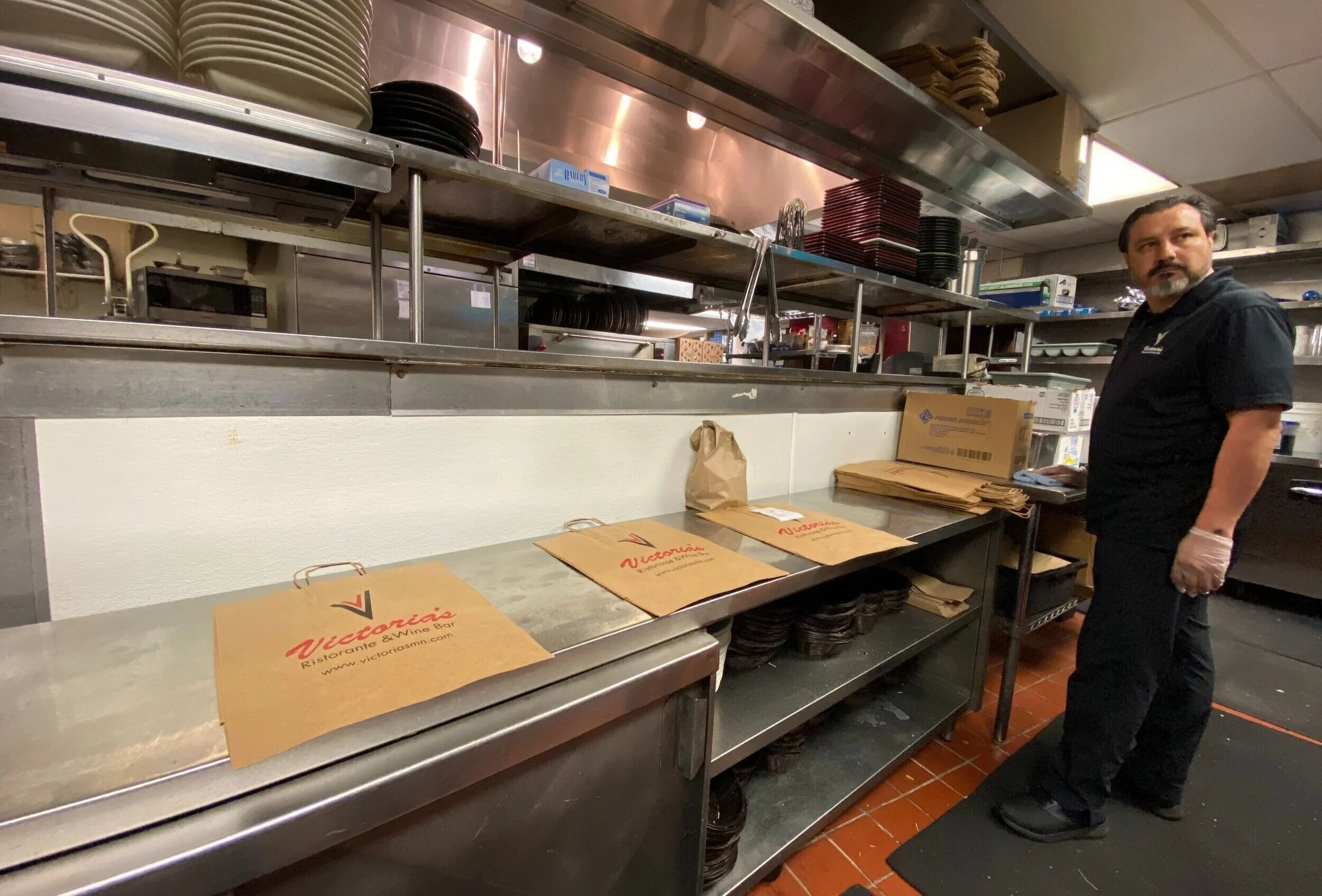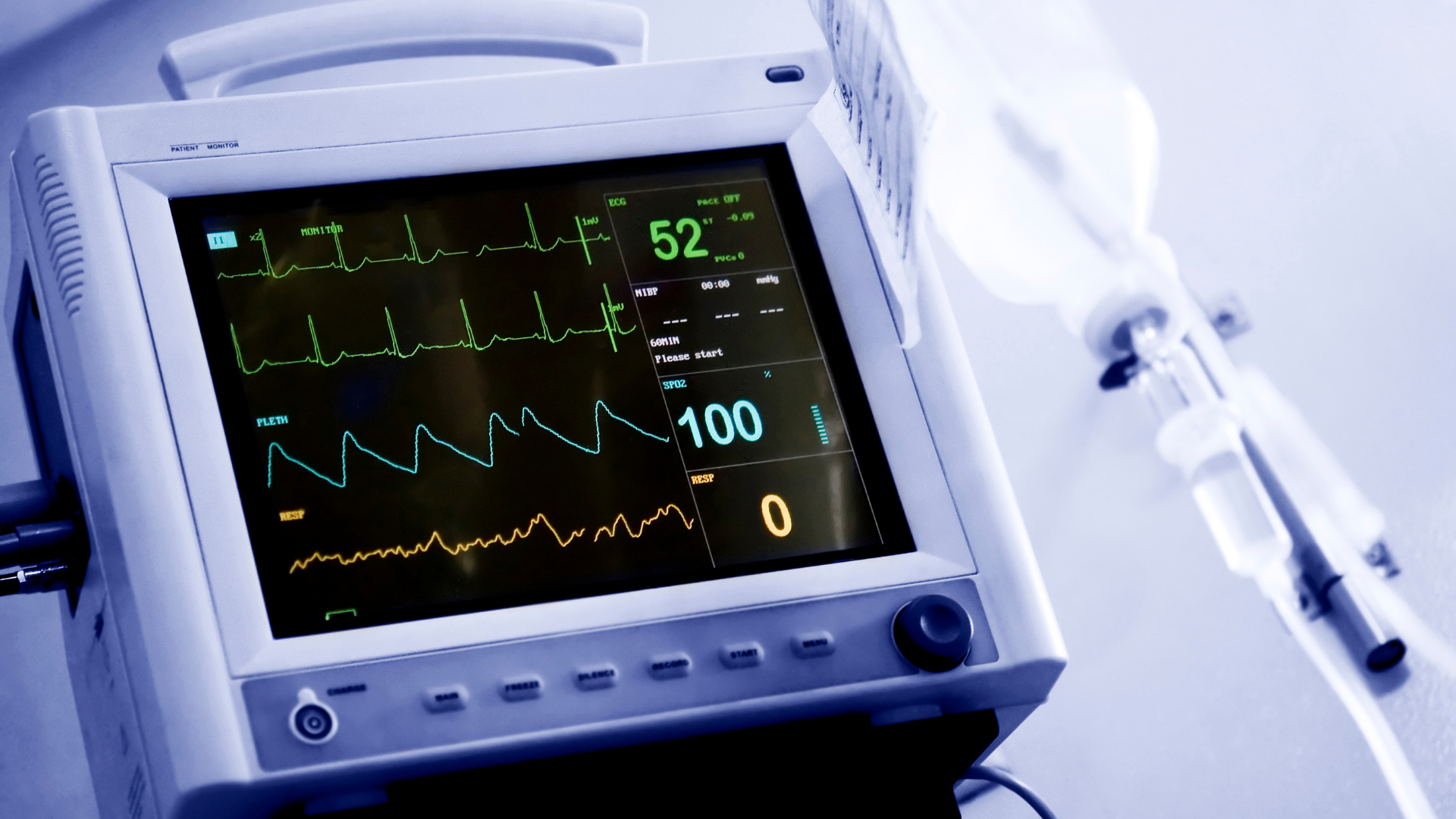Mayo ICU director: sacrifices have helped stabilize number of patients seeking critical care
Dr. Richard Oeckler is the director of the medical intensive care unit at Mayo Clinic in Rochester. On Thursday, we spoke with him about the Clinic’s ventilator and intensive care unit (ICU) capacity, the moral distress the pandemic is having on patients, families, and frontline workers, and how the sacrifices we are collectively making now are helping avoid a worst-case scenario. Below are some of the highlights of our conversation.
MCB: We hear a lot about the need to bulk up ICU capacity for the surge expected in the coming weeks. What types of measures are being taken now at Mayo Clinic to ensure local hospitals have an adequate amount of ICU beds available for patients?
RO: Well, first, the most important thing that we've had is Gov. [Tim] Walz’s leadership in instituting this social distancing … and the actual flattening of the curve. So, everybody making those kinds of significant sacrifices to prevent the spread and the increase of this virus has really been key to expanding our capacity. And why I say that is, we have a fixed capacity. ICU beds are pretty hard to expand and stand up in a rapid fashion.
Now, we can create, if we had to, something like a tent city of cots. But when we're talking about significant critical care delivery requiring close monitoring, high flow oxygen into ventilators, et cetera — that's a significant amount of infrastructure to have to set up. So, as much as we can flatten the curve and reduce the actual need for those things, that's going to pay much dividend on the back end here.
To that end, though, we have expanded the number of ICU beds and the ICU-capable beds that we have here in Rochester and throughout the health system. So, if you take Methodist Hospital, for instance, we have an ICU on the 10th floor that is a certain amount of beds and then we have a unit that's next door to it that was designed to be an ICU, but has just never been used as an ICU. And so we fit-tested everything there, did our due diligence on flows of oxygen, and now we've basically added about 30 beds there that could potentially be ICU-level beds if we needed them.
Out at St. Marys, what we've really done is reduce our elective case volumes. And so that really opens up many of our 180 or so beds that we have out there for potential medical ICU patients. You know, our medical ICU at St. Marys Hospital is 32 beds, but we have much more capacity beyond that because of the fact that we've reduced our elective volumes that would otherwise take up those capabilities.
MCB: To follow-up on that point about hospital capacity, how does Mayo stand now in terms of ventilators on-hand?
RO: Obviously, Mayo has had a lot of foresight with regards to disaster planning, and really just preparedness in general as far as the numbers of ventilators. So, as someone who has spent his whole life researching and working on ventilators, what I usually tell folks is that we're going to run out of staff long before we run out of ventilators. What I mean by that is it takes a dedicated number of professionals to run a specific number of ventilators. And what I think we've learned from this disaster is that really the key to mechanical ventilation is we have X number of ventilators in Rochester, but we only usually consider … one certain brand, our Hamilton-G5 is the one ventilator we use very frequently. Everyone looks at that and says, ‘oh gosh, we only have X number of Hamilton-G5s.’
Dr. Richard Oeckler
Well, what we always forget is that we have almost the same number of what we call non-invasive machines. If you're aware of folks who have CPAP or BiPAP machines at home that they use for obstructive sleep apnea, the more advanced versions of those machines can provide at least some sort of basic mechanical ventilation. So, we've even been working with folks out in New York with how they can set up and utilize some of those types of devices that oftentimes are forgotten about.
So, when you look at the number of ventilators that we have throughout all of southeast Minnesota, I think what we're trying to really do is reduce the demand more than increase the supply.
But we don't see, at least in our current projections, that either Mayo Clinic, or actually Minnesota as a whole, will likely exceed their capacity of either hospital beds or ventilators; and that again gets back to these hard kind of choices and decisions that everybody has made and the sacrifices of everybody — from store clerks and small businesses all the way up to the governor — to try and really flatten how many new cases we're seeing. To that end, it has been reassuring that in the last 10 days or so working in our ICU … we're seeing a similar amount of cases each day.
In other words, we're not seeing that kind of logarithmic growth that was going to be worrisome. And again, I just want to be cautiously optimistic, because I obviously don't have a crystal ball to predict what's going to happen down the road. But I think, based on the predictions, we are doing better than expected at this point. And I think all of those hard social distancing and shut downs that we're enduring seem to be having an effect here, allowing our supplies of ventilators and personal protective equipment and those types of things to remain available.
MCB: As someone involved in critical care, can you share the impacts this outbreak has had on not only patients, but also frontline workers?
RO: In the ICU, the effects are twofold … or maybe even, multifaceted, really. Something I would emphasize is actually the moral stress of this isolation — and that's moral distress on the patient, the family members, and also the workers. So, it's hard to see these very sick folks that have to be isolated in the room. Now, we've tried to maximize the way they can, if they're able to interact, how they and their family members, loved ones and also team members can interact if they cannot do so in person.
And by that, what we've done is outfitted every one of our ICU rooms here in Rochester … at least right now, has video conference capability. Basically, it's a type of Zoom, a secure type chat where folks can visit now. In extreme cases, end of life, I know there has been talk from other institutions around the state that apparently are completely limiting or excluding visitors. We've actually made exceptions for end of life, so one or two folks at a time are able to come physically visit the patients. And so that, I think, does help — if even just a tiny bit — with that moral distress we are seeing.
One thing with regards to PPE use, and so that we don't get into those situations you were initially asking about, is we've really started to be mindful of tests that we're ordering ... kind of trying to put all those tests together or batch them if we need to go into the room so we can limit the exposure. So, even our trainees and rounding techniques have changed a little bit. There are more virtual rounds. There are, perhaps, just the consultant, the fellow ... a couple of key members potentially rounding on each patient every day, and at least at this time in our ICU with the sickest patients, there are only several of us per day that are going around to the rooms; whereas, you know, in the past that there may have been a medical student, a resident, a fellow, potentially seven or eight team members going into that room. And so that’s really reduced our PPE use.
We're also starting to look at how we can recycle masks, and there are some institutional initiatives if we have to get to that point where we can actually kind of refresh some of the the N95s and things that we're using. But fortunately, at this point, I think it's more of that prevention and reduction of use that's really going to pay the biggest dividends.
Sean Baker is a Rochester journalist and the founder of Med City Beat.
The news never takes a day off, so we won’t either. If you’ve appreciated our reporting during the COVID-19 pandemic, please consider becoming a member. For $8/month, you are providing us the support we need to continue carrying out our mission of producing quality, accessible journalism.









